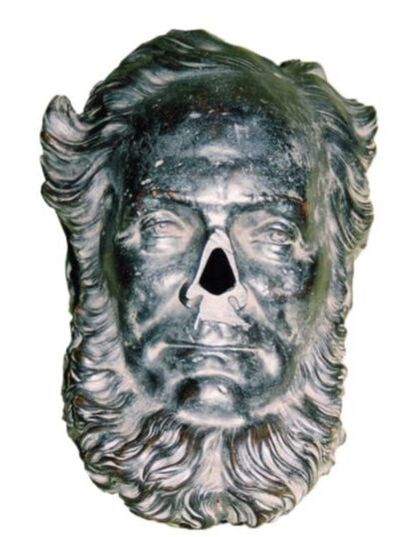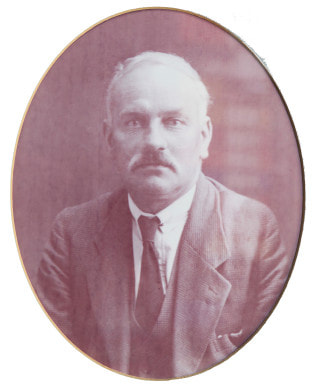|
By Barry Lally Availing themselves of the opportunity in the months preceding the outbreak of civil war in 1922, on a night in May, some local members of the anti-Treaty I.R.A. mutilated and decapitated the bronze statue of the Third Earl of Clancarty that had stood on its plinth within a railed enclosure on Station Road since 1874. After sectarian slogans had been daubed on neighbouring walls, the severed head was carried into town and thrown through the plate-glass window of Rothwell’s shop on Dunlo Street. Almost 500 people were killed in the Belfast between July 1920 and July 1922 and in February 1922 the Weaver Street killings were particularly horrid.
And at the same time that local Protestants were being intimidated, Catholic ex-members of the RIC were being shot at and beaten, and Catholic farmers who owned more land than the neighbours thought was justified were the targets of agitation and animal maiming. A hundred years ago in the April/May months in our locale saw ugly sectarism rear its head. It accelerated the continual decline of the protestant community which began from 1914-1918 , when a considerable number of local men were killed in WWI. Another factor is that the sons and daughters of the Protestant merchant class did generally not return to town after their education. They married coreligionists and lived elsewhere but many of the businesses on Main Street and the town centre remained in Protestant hands well up until the late 70s . The establishment of the State of Northern Ireland in June 1921 had been followed by attacks on Nationalist areas in Belfast, which continued into 1922 and resulted in thousands of Catholics being driven from their homes. The formation of the Provisional Government of the Irish Free State on 14th January 1922 heralded the beginning of a progressive breakdown in law and order. In Ballinasloe, burglaries, particularly of business premises, became virtually a nightly occurrence. Though not yet officially disbanded, the R.I.C. had in effect been stood down, and on 18th March Inspector Taylor handed over the Dunlo Street barracks to Commandant Beegan, 3rd Battalion, I.R.A., when it became the local headquarters of the Republican Police, an untrained body not answerable to the Provisional Government. The previous month, the Regiment of Royal Dragoons, as well as the Black and Tans, had left the town, which was to remain without a statutory police force until the arrival of a contingent of the recently-formed Civic Guards at the end of September. During the months of May and June 1922, prior to the outbreak of the Civil War, a determined effort was made to rid Ballinasloe of its Protestant community, which comprised approximately 8 per cent of the town’s population. At the same time a similar campaign was waged against former members of the Royal Irish Constabulary, in the course of which two men were seriously wounded in a gun attack, while others were beaten and ordered to leave the area. Contemporary press reports paint a vivid picture of what was happening. On 10th June “The Connacht Tribune” published the following account: “Robert Orr, Brackernagh, a Protestant, who had been employed as a carpenter at Garbally, and who has a wife and three or four daughters and an invalid son, was visited by a number of armed men at about 3 o’clock on Friday morning. When they were admitted they asked for arms,but got none as none were to be had. The family were then huddled into one room and were threatened with disastrous consequences if they cried or made a noise. Orr, who was at the bedside near his invalid son, was beaten, but not seriously, on the head and received a black eye. One of the raiders, it is stated, told Mrs. Orr that she would have the leave the place by Monday. When she mentioned travelling expenses and asked where she was to get the money, one the raiders retorted by asking where did the Belfast refugees get the money. The house was then systematically gone through, the raiders breaking all before them, delph, furniture, lamps, windows, glasses, teapots, etc. – in fact there was nothing that was not broken into smithereens. Even items of food – bread, flour, milk, sugar – were spilled on the floor, and next morning the house presented a wrecked and dilapidated appearance. “Mrs. Orr and the rest of the family were grief-stricken at the turn events had taken. She said they preferred to work with a Catholic any day to one of their own creed, and referred to the kindly manner they had always been treated by Catholics. They built this house themselves, and have been 40 years living there. They are natives of the County Monaghan, to which place with their personal belongings, a quantity of which was disposed of, they took their departure on Monday.” A week later another report ran as follows: “If the campaign against Protestants which has been carried on in Ballinasloe since the end of last month is continued in similar intensity for a few weeks more, there will not be a Protestant left in the place. Presbyterians and members of the Church of Ireland, poor and well-to-do, old and young, widows and children, all alike have suffered in intimidation, persecution and expulsion. The campaign is carried out in the night-time, by unnamed persons, who give no reason for their action. The system which usually is followed is, first, the dispatch of an anonymous letter giving the recipient so many days, or hours to clear out. If this notice is disregarded, bullets are fired at night through his windows, bombs are thrown at his house, or his house is burned down. In one case, an old man who had not left when ordered to do so was visited by a gang who smashed everything in his cottage – every cup and every saucer, and then compelled him to leave the town, with his crippled son, the two of them destitute. The list of those proscribed is added to constantly, and every Protestant is simply waiting for his turn to come.” The campaign of intimidation was not without its critics, religious and political. Speaking a half-past eleven Mass in St. Michael’s Church on Ascension Thursday, Fr. John Heenan C.C. said that he was informed that on the night previous a bomb was thrown into the drapery establishment of Mr. Wood, Main Street. That was the worst of the outrages yet committed. It was a crime against the Catholic Church and religion; it was an outrage against the teachings of the Church. And yet some people would try and find an excuse for this horrible act whereby lives might have been lost. “In the Bishop’s, in my own, and in the name of the clergy, and in your name, I tender my sympathy to the victim of last night’s diabolical outrage, and I denounce it as a crime against humanity and the great God of heaven.” Again in St. Michael’s Church, at 10 o’clock Mass on Pentecost Sunday, referring to the attacks on retired policemen and Protestants, Fr. Thomas Naughton C.C. said: “Lest by our silence we may be taken as condoning these outrages, I think it is our duty to say a few words, and only a few words. They are outrages and crimes unchristian, and absolutely against the law of God. . Our silence does not by any means imply that we condone these offences, or that we encourage them, or anything of the like. We denounce them in the strongest terms as unchristian. We denounced them when they were committed by the Black and Tans, and we denounce them now when they are committed by our gallant Irish, who try to masquerade under the name of the Irish Republic.” At last Mass on the same day, Fr. Thomas Maloney C.C. spoke of those who disregarded the 5th and 7th Commandments Those who committed those outrages were good at heart, but were led astray by their passions. “I tell you without the least fear of being wrong that any man or woman who goes out in cold blood and deliberately destroys life or property, no matter to whom the life or property belongs, is walking straight on the path to hell, and people who instruct them to commit those deeds are equally guilty. I do not say this in any bitterness or condemnation, but in order to appeal to those people to desist from such cruel acts in future.” In the Market Square, at a public meeting on 15th June in the run-up to that month’s General Election, Frank Fahy T.D. (Anti-Treaty) stated they were not in favour of persecuting people on account of their religion as had been done lately in Ballinasloe. He did not want the votes of men who persecuted others on account of their religion, and neither did the other men on the platform. “Because Belfast lost its civilization, were they, in God’s name, to follow in the footsteps of Belfast and disgrace themselves? They would not do it. The seizure of grasslands and the persecution of Protestants was done by selfish people for a selfish end. There were men coming out now who were seizing the property of others and persecuting Protestants, but they would not help during the last three years when they wanted them to do so”. On the same occasion, George Nicholls T.D. (Pro-Treaty) – portrayed in later life in our photograph - said “there was a lot of unadulterated blackguardism going on in Ballinasloe which was done by men who were never in the Sinn Féin movement, who were friends of the police and the British Army when they were in the country, and as soon as the police were gone started the robberies, plundering’s and burnings. The proper place for them was in the jails”.
0 Comments
Leave a Reply. |
CLICK HERE to read the Latest Ballinasloe News Articles
June 2024
|
The Town Team was set up by BACD Ltd. to revive the fortunes of Ballinasloe and its hinterland. With the main focus to build on the town’s many strengths, change existing negative perceptions and bring about measurable improvements in the town centre economy and its wider social value.
|
Ballinasloe Area Community Development Ltd.
Ballinasloe Enterprise Centre Creagh Ballinasloe Co. Galway |
All generic photos and images have been sourced and are free of copyright or are clip art images free of copyright. Photos of Ballinasloe have been donated by BEC. If you have any photos that you would like included on the website please email us
Copyright © All rights reserved, 2024 BACD



 RSS Feed
RSS Feed
